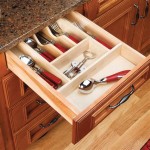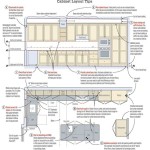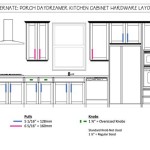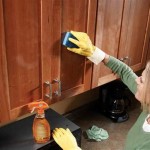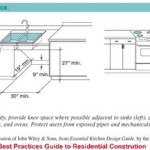Resurfacing Kitchen Cupboard Doors in Adelaide: A Comprehensive Guide
Kitchen renovations can be costly and disruptive. However, a full-scale remodel isn't always necessary to revitalise a tired or outdated kitchen. Resurfacing kitchen cupboard doors offers a cost-effective and efficient alternative, allowing homeowners in Adelaide to transform their kitchen's aesthetic without the significant expense and inconvenience associated with complete replacement. This article provides a comprehensive overview of resurfacing kitchen cupboard doors in Adelaide, covering the process, material options, benefits, typical costs, and important considerations to help homeowners make informed decisions.
The act of resurfacing focuses on updating the visible surfaces of the existing cupboard frame and doors. This typically involves replacing the doors and drawer fronts, and applying a new finish to the exposed cabinet frames. This allows for a dramatic visual change without altering the underlying structure of the kitchen itself. This approach is particularly suitable for kitchens with structurally sound cabinets that simply require a cosmetic update.
Resurfacing offers a considerable range of design possibilities. Homeowners can choose from various door styles, materials, and finishes to create a kitchen that reflects their personal taste. From modern, minimalist designs to more traditional and ornate styles, the options are extensive. The process provides an opportunity to update the kitchen's hardware, such as handles and knobs, further enhancing the overall aesthetic.
Benefits of Resurfacing Kitchen Cupboard Doors
Resurfacing kitchen cupboard doors provides numerous advantages over a complete kitchen renovation. These benefits contribute to its popularity among Adelaide homeowners seeking kitchen upgrades.
Cost-Effectiveness: One of the most significant advantages of resurfacing is its affordability. Compared to a complete kitchen renovation, which involves replacing cabinets, countertops, and potentially plumbing and electrical work, resurfacing is considerably less expensive. The savings can be substantial, often representing a fraction of the cost of a full remodel. This allows homeowners to allocate their budget to other areas of the kitchen or home, such as new appliances or flooring.
Minimal Disruption: A full kitchen renovation can be a major disruption to daily life. It often involves weeks of construction, with limited or no access to the kitchen. Resurfacing, on the other hand, is a much quicker and less intrusive process. The existing cabinet framework remains in place, minimizing the need for demolition and reconstruction. This means homeowners can continue to use their kitchen, albeit with some temporary adjustments, during the resurfacing process. The reduced disruption makes resurfacing a particularly attractive option for busy households.
Environmentally Friendly: Resurfacing is a more sustainable option than replacing entire kitchen cabinets. By reusing the existing cabinet framework, it reduces the amount of waste sent to landfills. It also minimizes the environmental impact associated with manufacturing and transporting new cabinets. For homeowners concerned about their environmental footprint, resurfacing provides a responsible and eco-conscious approach to kitchen renovation.
Increased Property Value: A visually appealing and updated kitchen can significantly increase a home's market value. Resurfacing kitchen cupboard doors is a relatively inexpensive way to enhance the kitchen's appearance and attract potential buyers. A modern and well-maintained kitchen is often a key selling point for prospective homeowners, making resurfacing a worthwhile investment that can yield a positive return.
Customization Options: Despite reusing the existing cabinet framework, resurfacing offers a wide range of customization options. Homeowners can choose from various door styles, materials, finishes, and hardware to create a kitchen that reflects their personal taste. This allows for a high degree of personalization and ensures the updated kitchen complements the overall style of the home. The ability to customize the design makes resurfacing a versatile solution for homeowners with diverse aesthetic preferences.
Material Options for Kitchen Cupboard Doors
Selecting the right materials for kitchen cupboard doors is crucial for achieving the desired aesthetic and ensuring durability. Several materials are commonly used for resurfacing, each with its unique characteristics and benefits.
Laminate: Laminate is a popular choice for kitchen cupboard doors due to its affordability, durability, and ease of maintenance. It consists of a decorative layer bonded to a substrate, such as particleboard or MDF (Medium Density Fiberboard). Laminate is available in a vast array of colors, patterns, and textures, including wood grains and solid colors. It is resistant to scratches, stains, and moisture, making it a practical option for busy kitchens. Laminate is also relatively easy to clean, requiring only a damp cloth and mild detergent.
Vinyl Wrap: Vinyl wrap, also known as thermofoil, is another cost-effective option. It involves applying a thin layer of vinyl to a substrate, typically MDF, using heat and pressure. Vinyl wrap offers a seamless finish and is available in a variety of colors and textures. It is also moisture-resistant and easy to clean. However, vinyl wrap can be susceptible to heat damage and may peel or bubble over time if exposed to extreme temperatures.
Wood Veneer: Wood veneer consists of thin slices of real wood applied to a substrate, such as particleboard or MDF. It offers the natural beauty and warmth of solid wood at a lower cost. Wood veneer is available in a variety of wood species, each with its unique grain patterns and color variations. It can be stained or finished to match the desired aesthetic. However, wood veneer is more susceptible to scratches and moisture damage than laminate or vinyl wrap. Regular maintenance and proper sealing are essential to protect the veneer and prolong its lifespan.
Solid Wood: Solid wood is a premium material that offers exceptional durability and timeless beauty. It is available in a variety of wood species, including oak, maple, cherry, and walnut. Solid wood doors can be customized with various profiles, such as raised panels, shaker styles, or flat panels. They can also be stained or painted to match the desired aesthetic. Solid wood is a durable and long-lasting option, but it is also the most expensive material for resurfacing kitchen cupboard doors. It requires proper sealing and regular maintenance to prevent warping or cracking due to changes in humidity.
Painted MDF: MDF (Medium Density Fiberboard) is a manufactured wood product that is commonly used for painted kitchen cupboard doors. MDF is a stable and consistent material that is less prone to warping or cracking than solid wood. It provides a smooth and even surface for painting, resulting in a flawless finish. Painted MDF doors are available in a wide range of colors and can be customized with various profiles. They are also relatively easy to clean and maintain. However, painted MDF can be susceptible to scratches and dents, so it is important to choose a durable paint finish.
Essential Considerations Before Resurfacing
Before embarking on a kitchen cupboard door resurfacing project in Adelaide, it is essential to carefully consider several factors to ensure a successful outcome.
Cabinet Condition: The structural integrity of the existing cabinets is a critical factor. Resurfacing is only suitable for cabinets that are in good condition. If the cabinets are damaged, warped, or structurally unsound, resurfacing may not be a viable option. In such cases, complete cabinet replacement may be necessary. A professional assessment of the cabinet condition is recommended to determine the suitability of resurfacing.
Budget: Establishing a realistic budget is crucial for managing the costs of the resurfacing project. The cost of resurfacing can vary depending on the materials chosen, the size of the kitchen, and the complexity of the design. It's beneficial to obtain quotes from multiple resurfacing companies to compare prices and services. The budget should also include a contingency for unexpected expenses.
Design Style: Carefully consider the desired design style for the updated kitchen. Research different door styles, materials, finishes, and hardware options to determine the look and feel you wish to achieve. Consider how the new kitchen will complement the overall style of your home. It may be helpful to consult with a kitchen designer to explore different design possibilities and create a cohesive plan.
Professional Installation: While DIY resurfacing is possible, professional installation is generally recommended to ensure a high-quality finish. Experienced installers have the necessary skills and tools to properly fit the new doors and drawer fronts, apply the finish to the cabinet frames, and install the hardware. Professional installation can help prevent common problems, such as misaligned doors, uneven finishes, and damaged hardware.
Warranty and Guarantees: Inquire about the warranty and guarantees offered by the resurfacing company. A reputable company will typically offer a warranty on their workmanship and the materials used. This provides peace of mind and protects against potential defects or problems. Carefully review the terms and conditions of the warranty to understand the coverage and limitations.
Timeline: Understanding the project timeline is crucial for planning purposes. Resurfacing projects typically take less time than complete kitchen renovations, but the duration can vary depending on the size and complexity of the job. Discuss the timeline with the resurfacing company and ensure it aligns with your needs and schedule. Be aware that unexpected delays can occur, so it is important to factor in some flexibility.
Material and Finish Selection: Spend time researching and selecting the materials and finishes that best suit your needs and preferences. Consider the durability, maintenance requirements, and aesthetic appeal of each option. Request samples of different materials and finishes to assess their appearance in your kitchen's lighting. Pay attention to the color and texture of the materials and how they will complement your existing countertops, flooring, and appliances.
By carefully considering these factors, homeowners in Adelaide can make informed decisions about resurfacing their kitchen cupboard doors and achieve a beautiful and functional kitchen that meets their needs and budget.

Kitchen Resurfacing Adelaide Free Quotes

Kitchen Resurfacing Adelaide Free Quotes

Cabinet Door Resurfacing Adelaide Refresh Kitchen Bathroom

The Kitchen And Furniture Doctor Adelaide Metro Timber Rejuvenations

Home Eco Kitchen Resurfacing

Kitchen Resurfacing For Your Tired Benchtops Cabinets

Kitchen Resurfacing Remodelling New 2 Pac Lonsdale

Kitchen Resurfacing Adelaide Free Quotes

Kitchen Resurfacing Remodelling New 2 Pac Lonsdale

Gallery Eco Kitchen Resurfacing
Related Posts



